The Large White pig is a special kind of pig breed that can make your farming business go up.
If you’re a pig farmer aiming to grow your business, choosing this pig breed could be the key to taking your farm to the next level – that’s what we call commercial pig farming.

The Large White pig has numerous advantages, including a substantial meat yield, hardiness, proficiency, a good growth rate, and other great traits.
Let’s see in detail why the Large White Pig is a great pick.
What is a Large White pig?
The Large White pig is a British domestic pig, also known as the English Large White pig, originating from East Anglia, England. It has its origins in the Yorkshire pig breed.
It was officially recognized in 1868 and was soon exported to Australia, Argentina, Canada, Russia, Italy, and many other European countries.
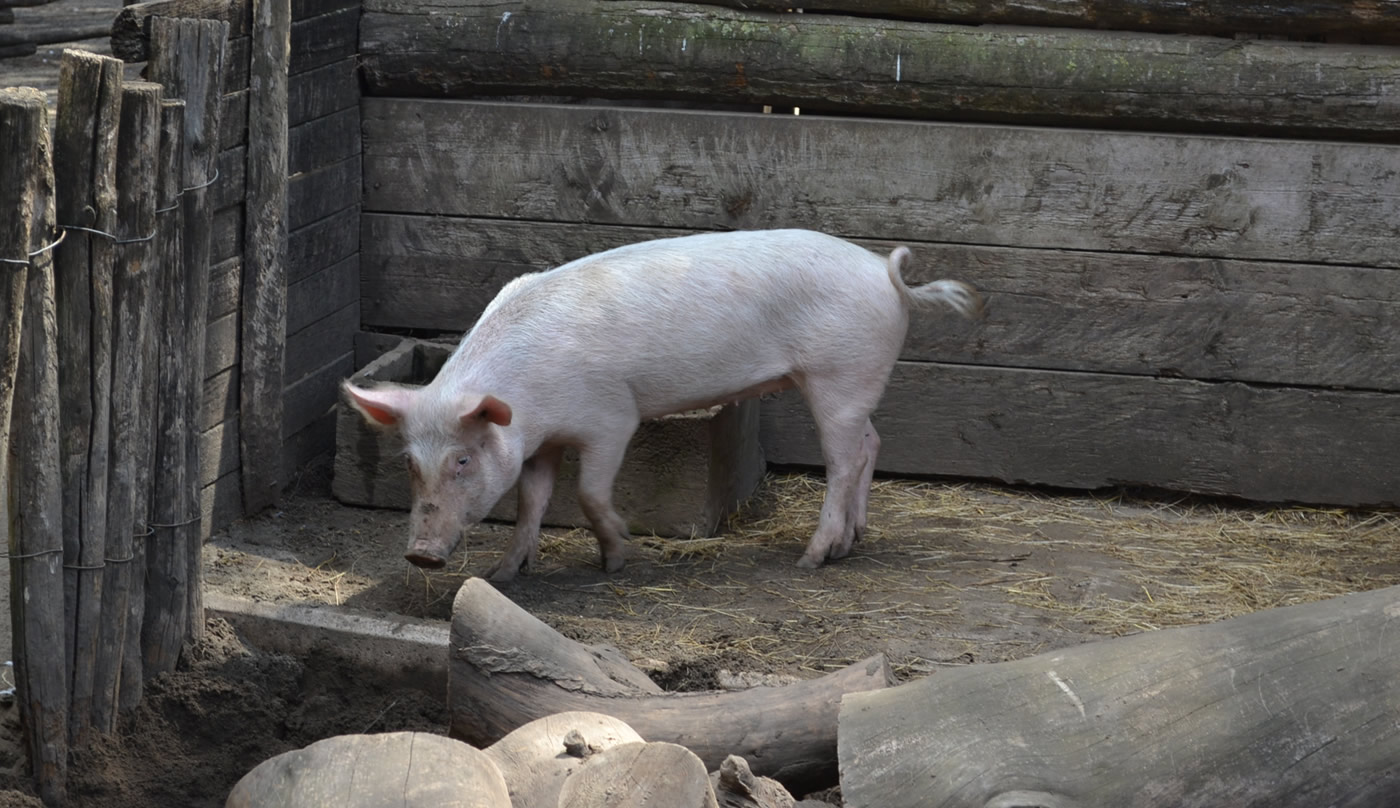
What is Large White pig used for?
| 1. Meat production, as this pig can produce lean pork meat used in various pork products, including cuts of meat, sausages, bacon, and more. |
| 2. Commercial pig farming due to its fast growth rate and efficient feed conversion. |
| 3. Crossbreeding programs to improve traits of other pig breeds. |
| 4. Research, as they are used in studies related to swine genetics, nutrition, and health. |
Large White Pig Characteristics
Physical Characteristics
The Berkshire pig’s distinct physical characteristics like color, body, and ears make it stand out from other breeds, ensuring easy recognition at first sight.
Color
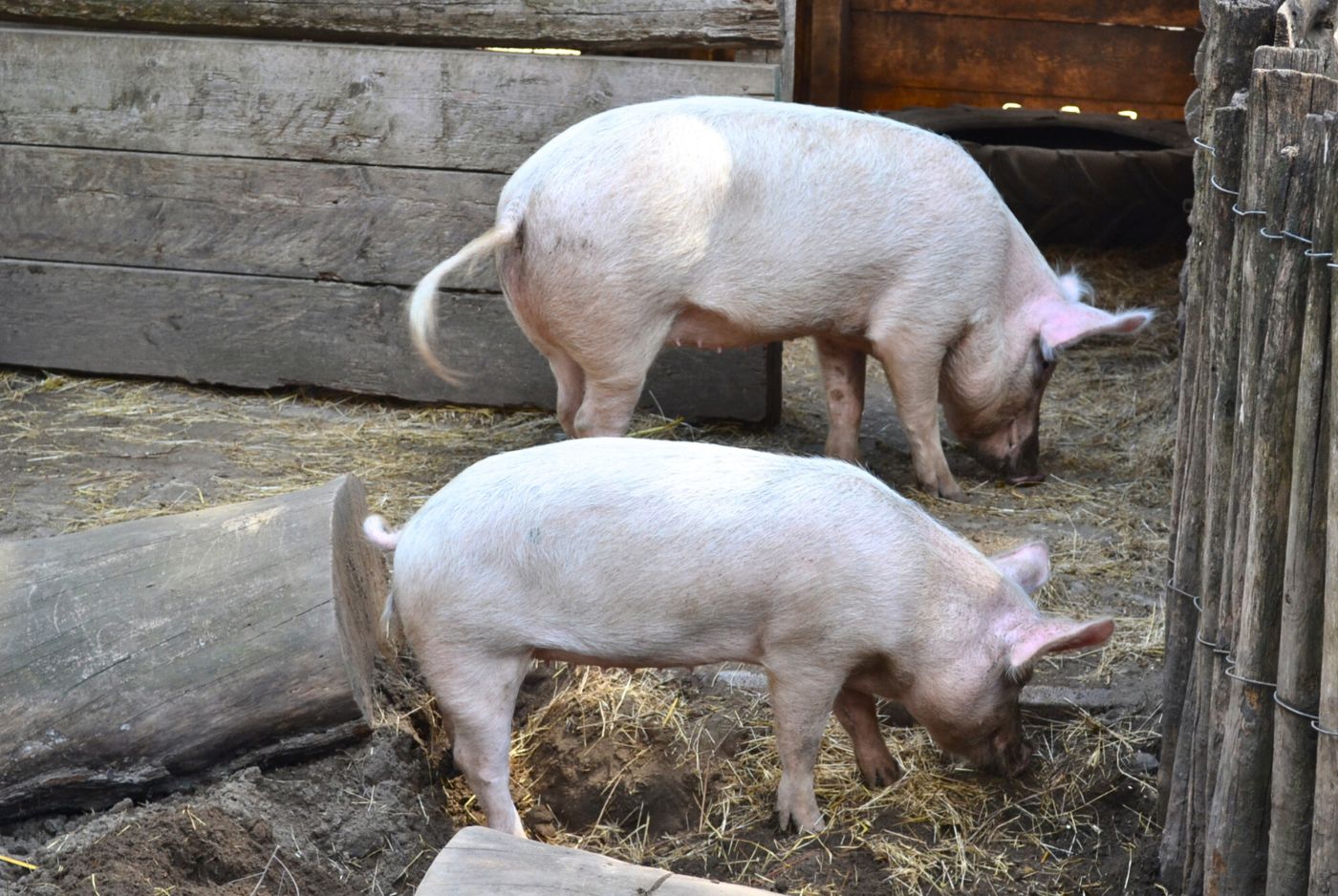
The color of the Large White pig is white. Its entire coat is pure white with no dark spots, including the hair.
Head, Face, and Ears

The Large White pig has a medium-sized head that is well-proportioned with its entire body size. The face of this pig is slightly dished, while the eyes are small and dark-colored.
The snout also has a medium size and is straight, with only a slight upturn at the end.
The ears are relatively large for the head size and are always erect, being white with hair on the outside and slightly pink on the inside.
Neck and Shoulders
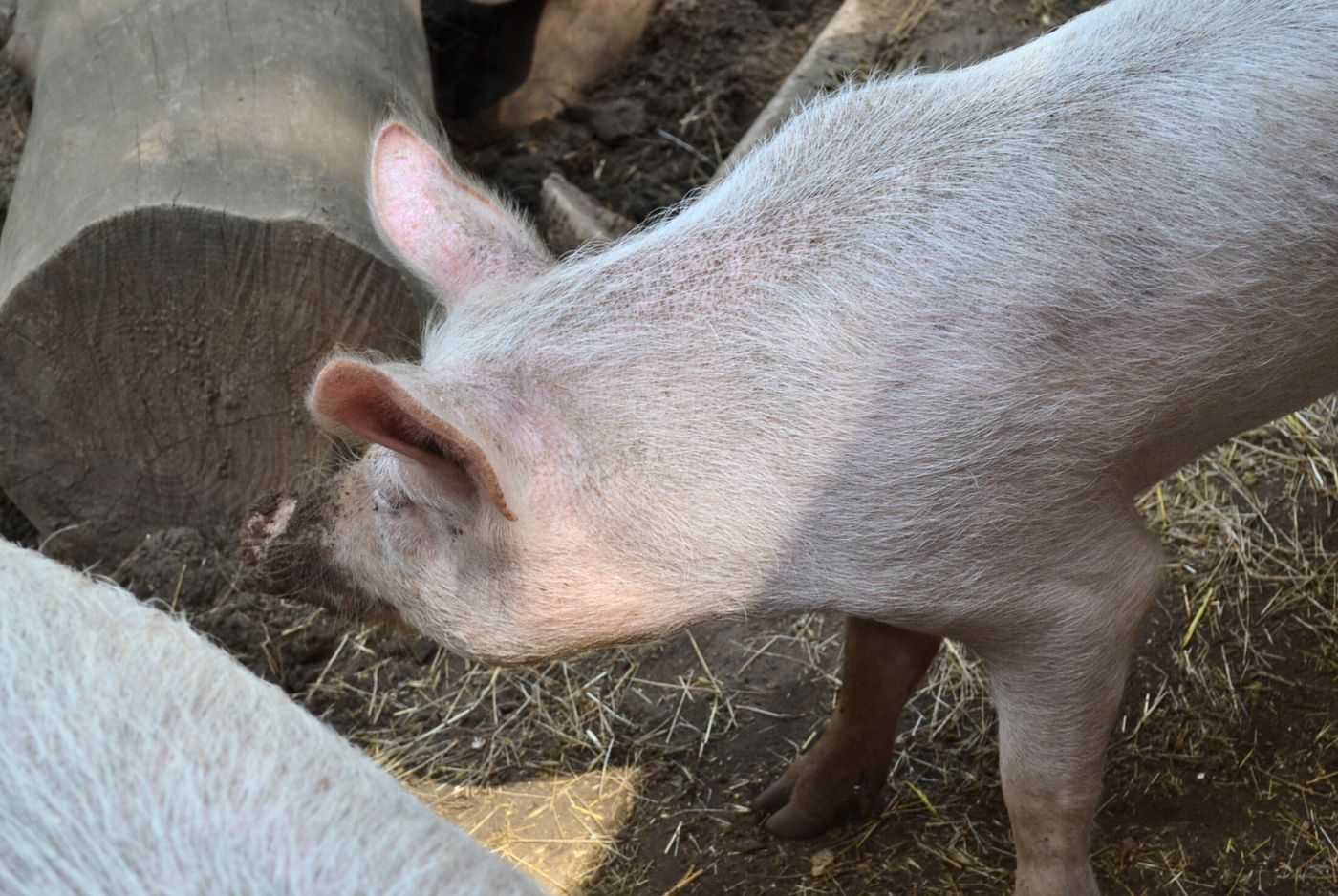
The neck is neat, moderately long, and appropriately full in comparison to the shoulders.
The shoulders are midrange to nicely broad, showing visible shoulder blades when the head is lowered, without rough texture, and not excessively deep before reaching maturity.
Legs

The legs are straight and very sturdy and muscular, capable of supporting the entire body weight quite well compared to other pigs, like Piétrain. They are well set apart, with a medium length appropriate for the body.
Body, Back, and Hams

The Large White pig’s body is robust and long, featuring a straight and muscular yet slightly arched back, well-sprung ribs, and large, well-muscled hams at the back as well as on the sides.
This pig has 16 to 17 pairs of ribs.
Tail
The Large White pig has a moderately long tail that is curled and covered with short, straight, white hair.
Teats
The Large White pig has 12 to 14 teats.
Size
The size of the Large White pig is large.
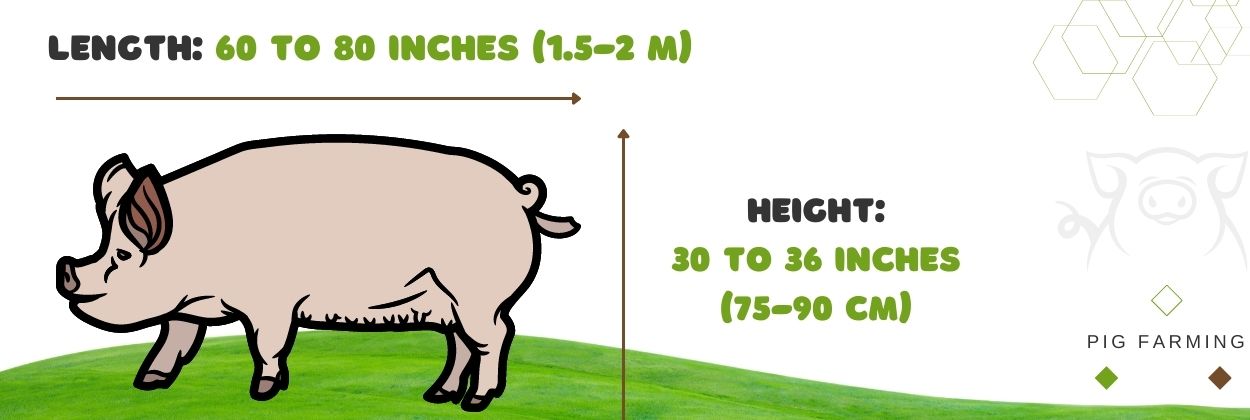
An adult Large White pig is 60 to 80 inches (1.5-2 m) long and 30 to 36 inches (75-90 cm) tall. Large White females are smaller than the males.
Lifespan
The lifespan of a Large White pig is 15 to 20 years.
Still, the lifespan of this type of pig can be influenced by various factors such as genetics, diet, living conditions, healthcare, and management practices.
Growth Rate
How fast do Large White pigs grow?
The Large White pig grows quite rapidly, reaching a desirable weight in 5 to 7 months.
This fast growth rate makes it a suitable breed for commercial pig farming.
A Large White piglet can gain about 0.5 to 1 lb (0.25-0.45 kg) of weight per day from birth to weaning.
After weaning, Large White pigs can gain weight at an average rate of about 1.5 to 2.5 lbs (0.7-1.1 kg) per day. This rapid growth continues until they reach 7 months of age.
Weight
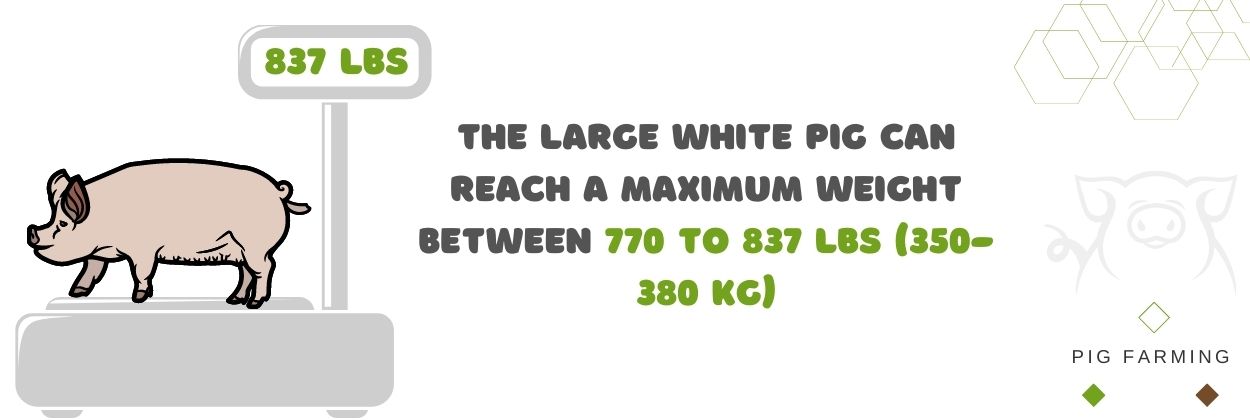
The Large White pig can reach a maximum weight between 770 to 837 lbs (350-380 kg) as an adult male, while adult females can reach a maximum weight of 573 to 661 lbs (250-300 kg).
Slaughtered Age
The Large white pig can be slaughtered at 5 to 7 months when they usually reach the market weight of 200 to 300 lbs (90-135 kg).
Depending on the pig farming practices, this pig can also be slaughtered at a higher weight.
Large white pigs that weigh around 250 to 300 lbs (115-135 kg) will give about 70% of their weight as meat after the skin is removed and the head is taken off.
This means the meat left on the carcass will weigh about 175 to 228 lbs (80-100 kg).
From that meat, around 75% can be used for bone-in cuts, resulting in about 130 to 194 lbs (60-85 kg) of meat.
Temperament and Behaviour
The Large White pig generally has a calm and docile temperament, making them a good breed that is easy to handle and work with.

While friendly and docile, they can exhibit moments of aggression during feeding times or when establishing dominance within a group.
They thrive in groups as they are quite social and capable of forming bonds.
These pigs can be vocal and use various sounds to communicate with each other and their caregivers. These sounds can range from grunts and squeals to more complex vocalizations.
When it comes to the rooting instinct, this depends on the environment in which they are being raised.
Large Whites raised outdoors or in a free pasture system can show a natural rooting instinct and actively root and search for food in the soil. But, those raised in confinement will not display these rooting behaviors.
As for piglets, they have playful behavior. They love to run, jump, and interact with each other in playful ways.
Large White Pig Meat
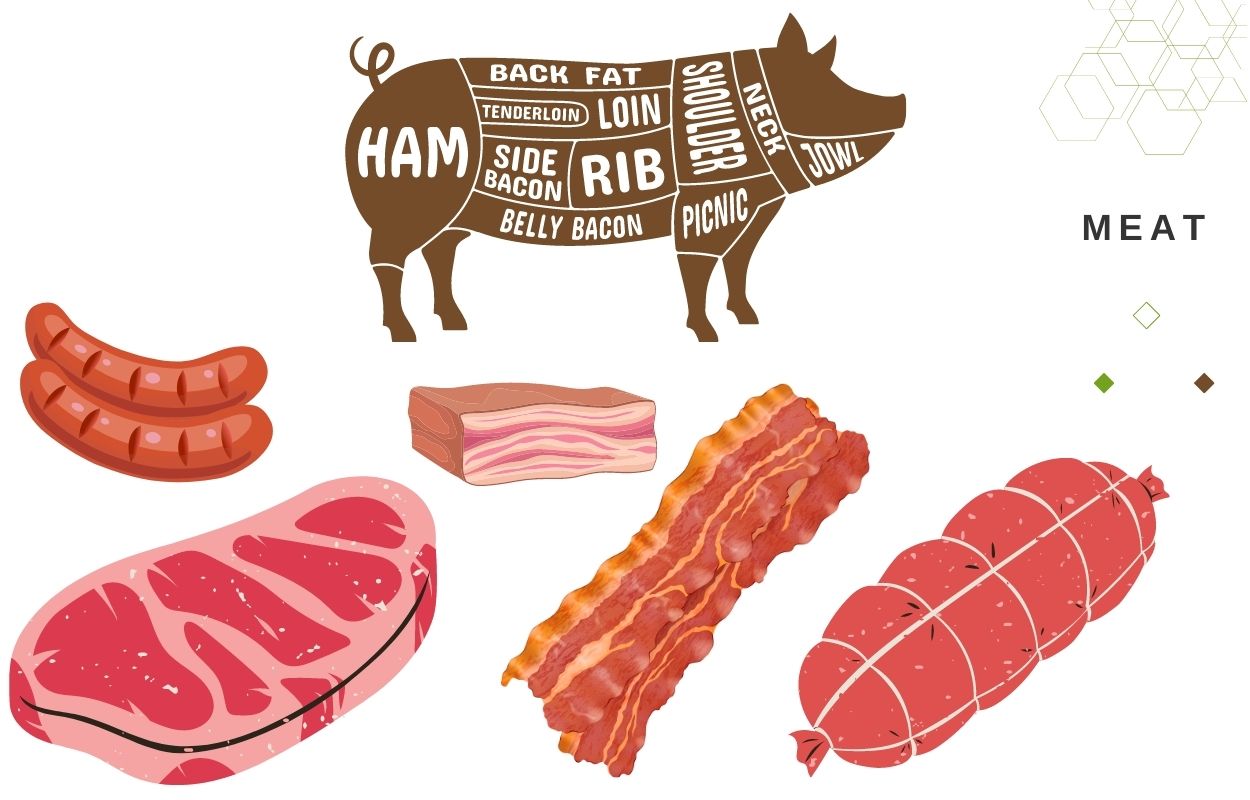
The meat of the Large White pig is known for being lean, with a relatively low-fat content compared to other breeds. While it is not as lean as Piétrain, it still falls within the category of very low-fat cuts.
Large White pig meat has gained popularity for commercial pork production due to its fast growth rate, efficient feed conversion, and leanness. Its lean quality makes it ideal for a variety of pork products such as sausages, hams, and bacon.
Large White pig meat is a staple in pork production, valued for its consistent meat quality.
In terms of taste and texture, the meat of this pig does not possess distinct flavors or tenderness found in other heritage pig breeds like Berkshire or Tamworth.
Still, it offers a uniform texture and pleasant taste. It is a suitable choice for those who prefer a milder flavor that can easily adapt to various homemade products and cooking methods.
Raising Large White Pig
Raising Large White pigs involves providing them with a suitable environment, housing and shelter, a constant supply of fresh water, and a nutritious and balanced diet.
Let’s see each one of these key aspects involved in raising Large White pigs.
Feeding Large White Pig
Large White pigs can be fed a wide variety of foods, such as fruits, vegetables, nuts, dairy, boiled eggs, grains, and cereals like barley, wheat, alfalfa, oats, and coarse fodder like hay during colder times. You can also give them unfinished food and kitchen scraps.
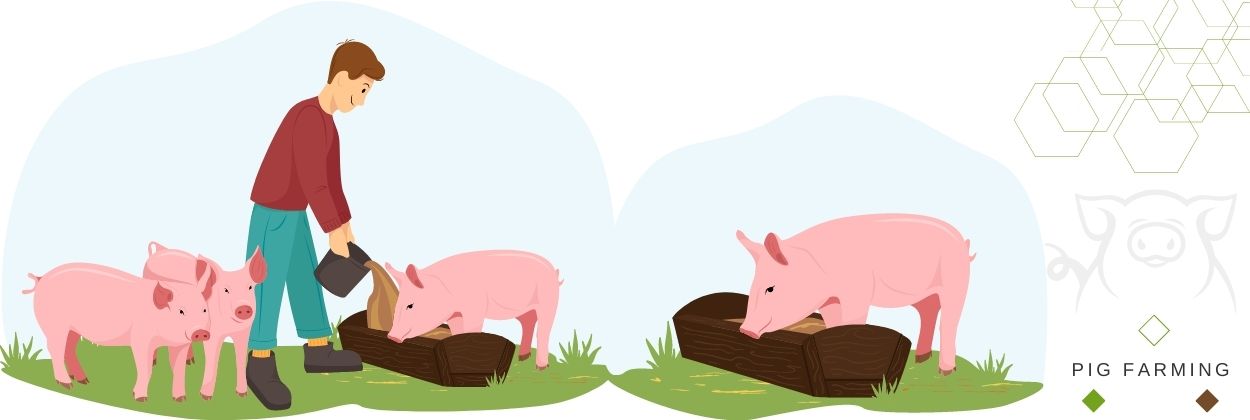
Like any other pig breed, these pigs need a balanced diet consisting of fiber, protein, carbohydrates, vitamins, and minerals.
On average, a Large White pig eats about 4% of its weight in food per day.
For healthy growth and proper development, I recommend adding mineral supplements and vitamins to their diet.
If raised not for commercial production but on a small to medium farm, these pigs can even feed themselves by rooting and grazing if allowed to roam freely in a pasture.
The Large White pig is highly active and, like many other pigs, is quite good at digging and searching for food.
Environment
As Landrace, the Large White pigs are adaptable when it comes to their living conditions. They can be raised in confinement setups for commercial pig production, but they can also thrive in free-range systems.
When housed in controlled environments, they adapt to the provided space, and some of their instincts are suppressed while they remain docile pigs.
On the other hand, when they are raised in a free-range environment, they take advantage of the freedom to roam and explore, displaying their natural behaviors such as rooting and grazing.
No matter where they’re raised, Large White pigs show they can adjust well and are strong.
Climate
Large White pigs prefer regions with temperate climates, avoiding extremes of heat or cold. But, they can be raised in a variety of climates as long as they have suitable conditions.
Large White pigs can tolerate colder temperatures, but they might require proper shelter and bedding during colder months to stay warm. Similarly, in hot climates, shade and proper ventilation are essential to prevent heat stress.
Shelter
Large White pigs need shelter with clean bedding and sturdy fencing. The shelter provides them protection from rain, snow, cold temperatures, and other extreme weather conditions.
The shape or material of the shelter doesn’t matter in particular. It can be made from metal or wood, and shaped like an A-frame or a three-sided structure – whatever it is, it’s sufficient for these pigs. Just keep in mind that the shelter needs to be properly ventilated in order for the pigs to grow healthy.
The fencing does not let them escape while keeping the predator at a distance.
How much space does a Large White pig need?
A Large White pig requires a minimum of 15 to 22 square feet per pig in confinement for mature pigs, and 10 to 12 square feet for growing pigs.

I strongly recommend that you always check the local regulations or guidelines for space requirements in your area.
Breeding Large White pigs
You can start breeding Large White pigs at 8 months of age.
Although they become sexually mature at 6 months, I recommend waiting for an additional two months to ensure the female is fully prepared for her first pregnancy.
The actual breeding process depends on common practices at the pig farm. You can choose to breed them naturally. But, if you don’t have all the genetics within your farm, you can use artificial insemination, even if the specific boar with desirable genes is not on your farm.
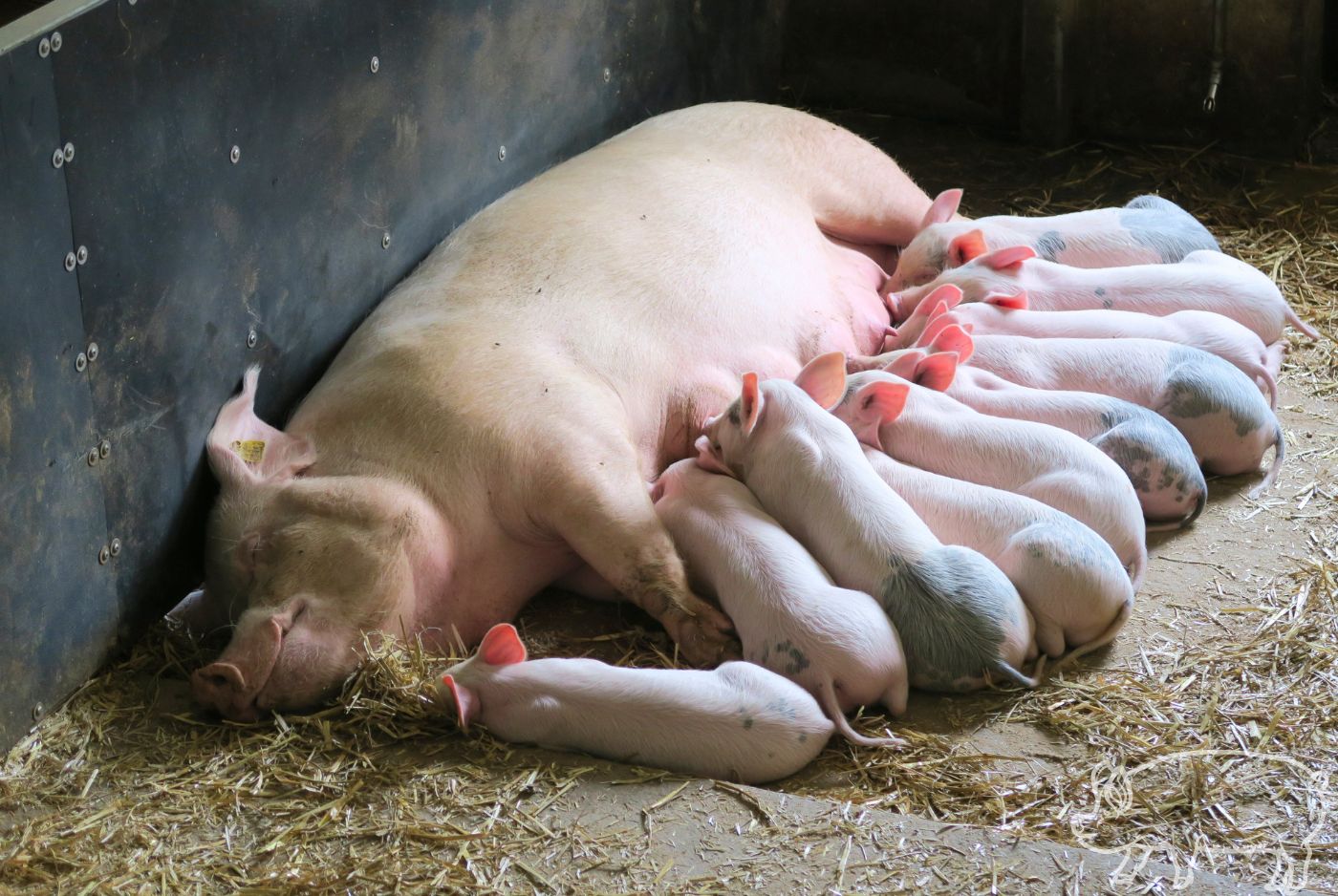
Once you decide on the method, you need to ensure your female pig comes into heat. Monitor her for signs like restlessness and a swollen vulva.
During heat, sows are either brought into contact with the chosen boar or are artificially inseminated with semen collected from selected boars.
After successful mating, the sow enters a gestation period of approximately 3 months, 3 weeks, and 3 days. She is then moved to a farrowing area where she gives birth to piglets. If the weather is cold, you need to ensure that the piglets’ housing has a well-managed heating system.
The Large White is a maternal pig breed.
Large White females can remain highly effective and successful in the breeding process for up to seven years. During this time, these sows can give birth to multiple litters of piglets and continue to produce offspring with good growth rates, health, and overall breeding performance.
The gestation period lasts for 3 months, 3 weeks, and 3 days.
The average litter size of the Large White pig is 10 to 11 piglets.
Large White sows have excellent mothering skills and take very good care of the piglets. They also produce a sufficient amount of milk to feed all the piglets.
Large White piglets grow rapidly and can be weaned at five weeks of age. The sow can be reintroduced to the boar 10 days after weaning her piglets. In this way, a Large White pig can have up to 20 to 22 piglets per year.
Large White pig health issues
The Large White pig has specific diseases associated with its breed, such as sunburns and skin damage like sores and lesions. This is due to the fact that its skin is white, offering little protection against the sun’s rays.
Another common health issue among Large White pigs is heat stress, particularly when their living area lacks proper ventilation or when they are exposed to extremely high temperatures. Also, they may experience leg and joint problems, including lameness or arthritis.
Other diseases to which the Large White pig is prone include common pig diseases such as respiratory issues (e.g., pneumonia) and various internal and external parasites like Parvovirus and E. coli. These can manifest when there is a lack of a proper biosecurity plan in place at the pig farm.
Vaccination
Large White pigs require vaccination. When vaccinating these pigs, you can simply follow the common pig vaccination chart for the most widespread pig diseases.
Why should you raise Large White pigs?
Profitability
The Large White is a pig breed with significant potential for a profitable pig farming business.
This breed is well-suited for commercial pig farming due to its qualities, including its large size, high meat yield, rapid growth rate, impressive litter size, and efficient feed-to-growth ratio.
Also, this pig breed can be raised in indoor facilities, eliminating the need for access to pasture as required by heritage breeds.
The necessary expenses include a well-constructed shelter or facility with proper ventilation, a designated area equipped with a heat management system for piglets, a robust biosecurity plan to minimize disease risks, and an appropriate feed regimen.
You can generate profit by selling the meat of these pigs directly to pork production businesses, as many meat producers search for reliable lean meat sources like that of the Large White breed, particularly within the bacon industry. With a strong market demand, there is definite potential for profit.
You also have the option to sell these pigs to other pig farmers.
A single Large White boar can have a price of $450, while a Large White gilt can cost up to $550.
This presents an opportunity for income through the sale of breeding stock to fellow farmers.
Personal Use
If you want to have your own pork meat from your homestead and you need more meat than you’d get from an American Guinea hog, you can definitely raise a Large White pig on your homestead.

These pigs are calm and well-behaved, which makes them a good choice for people who are new to homesteading. They also don’t tend to become overweight, which is helpful for beginners who don’t know exactly how much food they need.
These pigs are generally great because they can provide you and your family with a lot of meat. You can use this meat in all the food you make at home, whether baking or grilling it.
Advantages and Disadvantages
Here are the advantages and disadvantages of the Large White pig breed:
| Advantages | Disadvantages |
|---|---|
| Fast growth rate | Prone to certain health issues including leg problems and respiratory issues. |
| Great feed conversion | Can experience stress-related problems |
| Docile and friendly behavior | Prone to sunburn and skin damage |
| Great mothering skills | Higher feed requirements |
| Good litter size | |
| High prolificacy, making it great for intensive farming |



thanks for the information
Hello Syabonga,
You’re welcome! I’m glad I could help. If you have any more questions or need further information, feel free to ask!